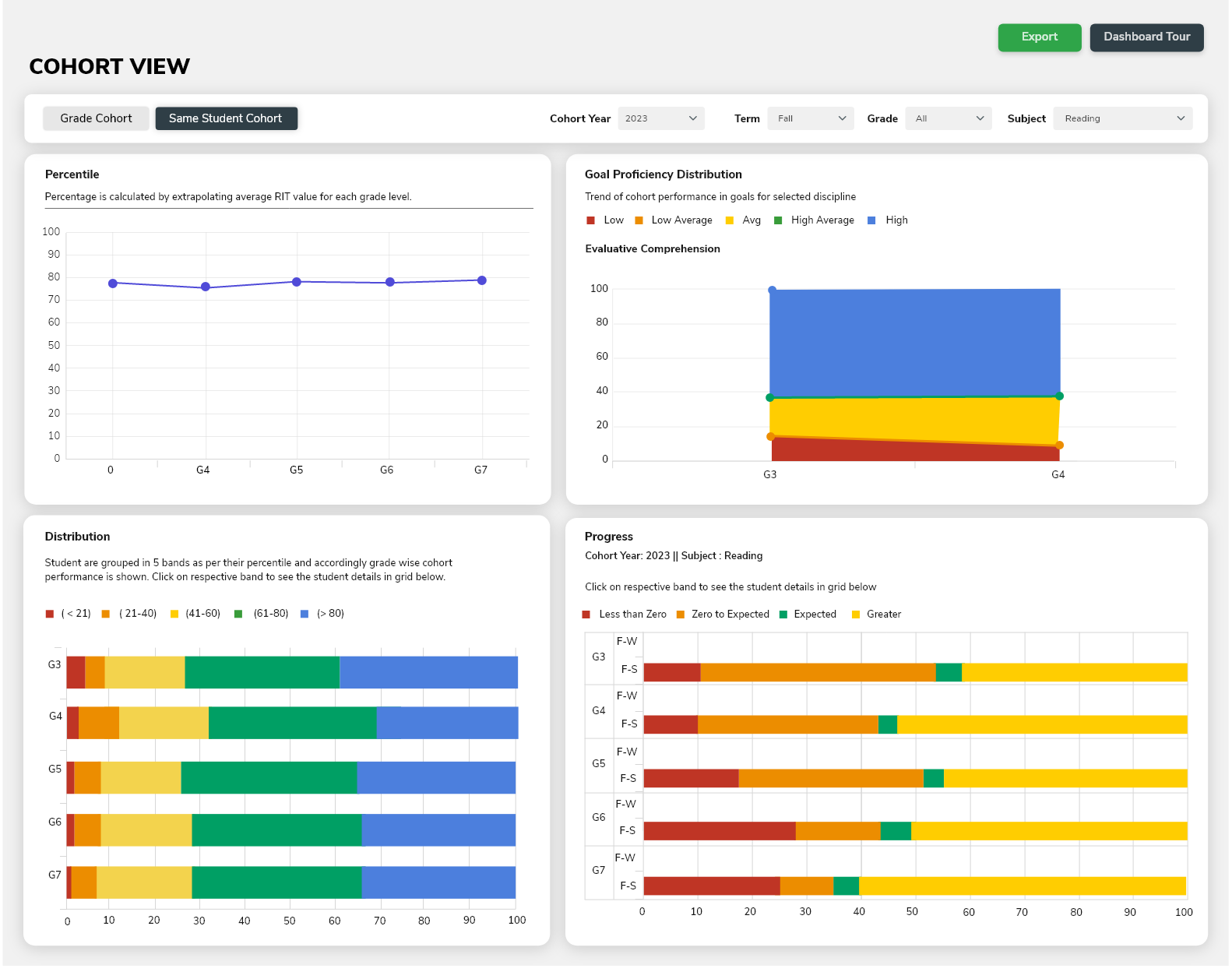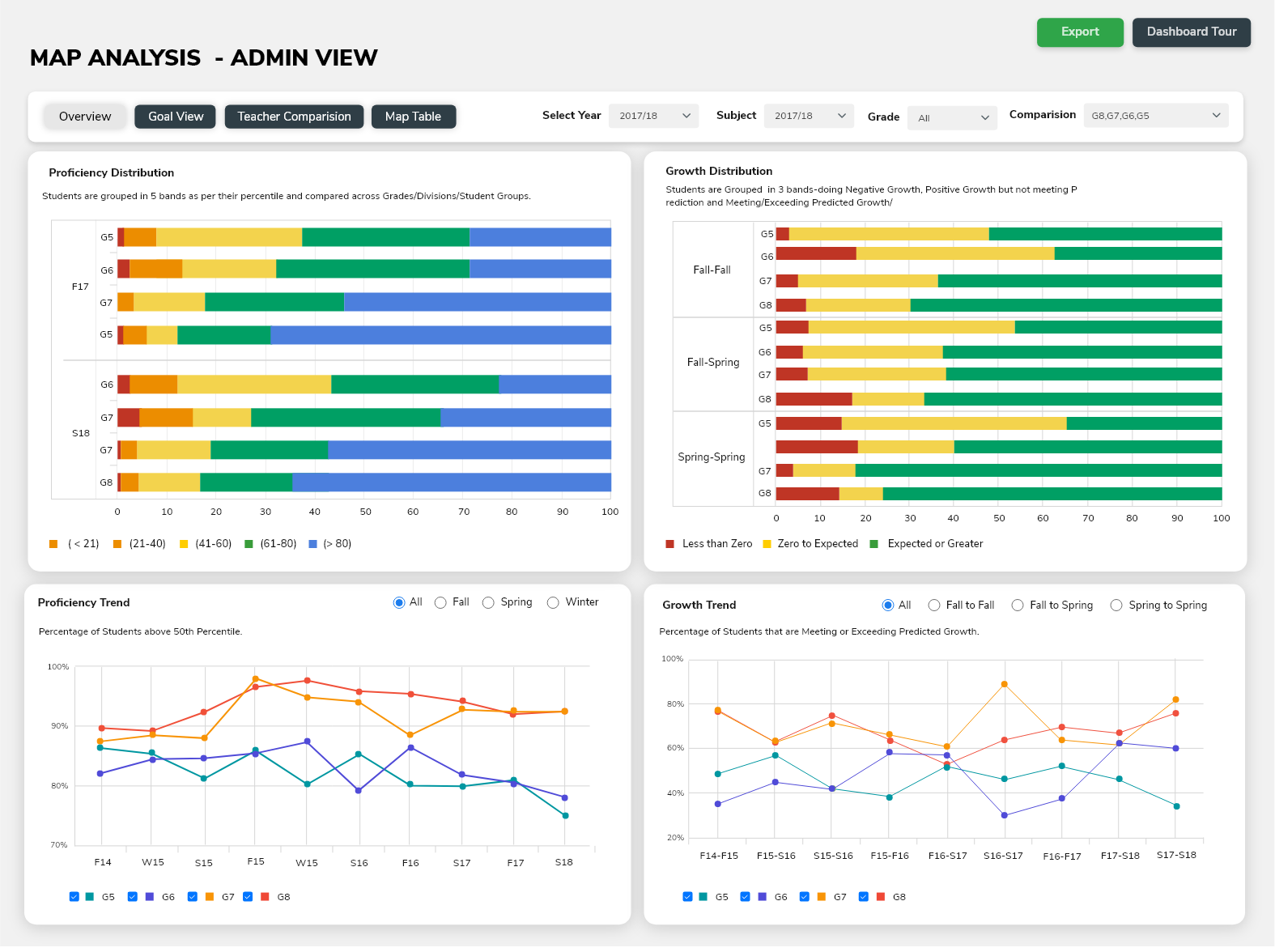MAP (Measure of Academic Progress)
MAP (Measure of Academic Progress) solution offers in-depth analysis for teachers and admins to track proficiency and growth over terms.




MAP provides teachers with valuable data on student proficiency and growth, enabling them to tailor their instruction to meet individual student needs. This personalized approach can lead to improved learning outcomes.
Teachers can identify trends in student performance over time, helping them pinpoint areas of strength and weakness in their curriculum and teaching methods.
With the ability to drill down into specific student data, teachers can offer targeted support and interventions to students who may be struggling, ultimately helping them catch up and succeed.
Teachers can compare the progress of their students with the overall school average, allowing them to assess how well their class is performing in relation to their peers.
Cohort analysis enables administrators to assess the effectiveness of educational programs and initiatives over time, helping them make adjustments as needed.
The ability to analyze student proficiency and growth in different teachers' classes allows administrators to evaluate teaching effectiveness and provide targeted support to educators.
